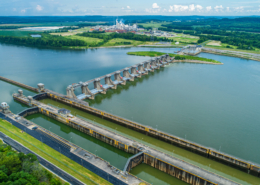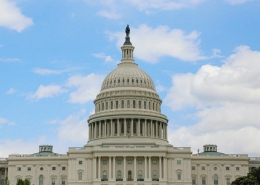Quick, what’s the most expensive mass transit project currently under consideration?
You would probably answer “the new Hudson River Tunnel,” which has a proposed price tag of $15.6 billion, of which $7.4 billion would come from federal cash grants and an additional $7.8 billion from low-interest federal loans.
But those amounts are the total capital cost of the project, in year-of-expenditure dollars. There are ways to look at the cost of transportation projects other than total capital cost, and some of those can be enlightening.
The Federal Transit Administration maintains a list of project profiles for ongoing and pending Capital Investment Grant (CIG) projects. Many (but by no means all) of those project profiles contain not only cost information but also the estimated ridership forecast for the project, usually in both a current/opening year and then in the final year of a multi-decade planning horizon (15 to 25 years off, depending on when the study was completed).
It is a simple matter to divide the total capital cost by the estimated daily ridership forecast to derive capital cost per estimated daily rider. And when you do that, your idea of which project is most expensive can shift a bit.
Example #1: the new Hudson River Tunnel. The total capital cost is indeed stupendously large, far bigger than any previous federally funded mass transit project, even when accounting for inflation from decades past. But the thing that the NYC area has going for it is a lot of passenger throughput. Project sponsors estimate that the new tunnel would have between 189,000 and 210,000 daily riders (unlinked passenger trips), most of which would be New Jersey Transit riders.
Factor that in, and the capital cost of the new tunnel per estimated daily rider is somewhere in the $74,000 to $83,000 per daily rider range, depending on where you are between the opening year and the planning horizon year.
Similarly, the proposed New York City Second Avenue Subway Phase 2 project has a large capital cost of $6.9 billion, but project sponsors estimate it would have between 111,500 and 123,000 riders per day, which would put the capital cost per daily rider in the $56,000 to $62.000 per rider range.
But when you look at the other pending CIG megaproject, the San Jose BART Silicon Valley Phase 2 extension with a capital cost of $9.3 billion, the project profile indicates a relatively low estimated daily ridership of between 14,000 per day at opening, rising to just 33,000 per day in the planning horizon year of 2040. That is a gobsmacking $656,000 per daily rider capital cost at opening, diminishing to a still-high $283,000 per daily rider capital cost in 2040.
Heavy-capacity rail and underwater tunnel projects always have a relatively high total capital cost because of the nature of the construction. (So does light-capacity rail, but for some reason, there are none of those pending, or else none of those that are in the development pipeline have both cost estimates and ridership forecasts yet.) Fixed-guideway bus rapid transit (BRT) projects, and streetcar projects, tend to have much lower total capital costs, and for this reason, BRT projects especially have become very popular of late.
The basic per-rider cost analysis also shows a large discrepancy in these project types. The pending South Carolina Lowcountry BRT project would cost $625 million and would only move 4,500 to 7,600 people per day, so even in its planning horizon year of 2040, its capital cost would still be over $82,000 per estimated daily rider – 46 percent higher than the NYC Second Avenue Subway extension.
(In Lowcountry’s defense, it was one of the first, if not the first, project to have a revised cost estimate completed since the post-COVID construction cost inflation drove up the prices of labor and materials so drastically, as this local newspaper article attests. Many of the other projects have cost estimates that were derived before the recent construction cost inflation.)
Houston, Texas has a BRT project that would move almost three times as many people but would also cost almost three times as much, for an $80,000 per daily rider capital cost in 2040.
Similarly, Los Angeles has a downtown streetcar project that would “only” cost $296 million, but in the planning horizon year of 2035, it would only move 5,100 people per day, resulting in a capital-cost-per-daily-rider of $58 grand, which is slightly higher than the per-rider cost of the $6.9 billion Second Avenue Subway in its horizon year.
On the bright side, Denver is planning a BRT project that would cost $255 million but would move an estimated 35,900 riders per day in its planning horizon year, for a capital cost per estimated daily rider of just $7,112, which is 11.5 times cheaper than the per-rider cost of the South Carolina Lowcountry BRT, and almost 40 times cheaper than the BART Silicon Valley extension per-rider in its horizon year.
Let’s emphasize that again – project sponsors say it will cost almost 40 times more to move a person in San Jose and Santa Clarita by building a BART heavy rail extension than it will cost to create a BRT line to move a person through Denver. (And the Denver BRT is 8.5 miles versus the BART extension’s 6.0 miles.) Some significant cost multiplier is inevitable when comparing heavy rail vs BRT, but 40-fold seems to be pushing things.
Major caveat: Even before COVID blew up mass transit ridership, there was a sense among participants in the field that the ridership estimates for new transportation projects (highway, transit, and rail) were somewhere between wild guesswork and “not worth the paper they are printed on.” The rules required the estimates to be made, but they weren’t particularly good.
The U.S. Government Accountability Office released a survey this year trying to quantify this, but unfortunately, most of the projects they selected had not finished the ridership estimate comparison yet, or were delaying it because they opened during COVID. The only two projects in the survey that opened pre-COVID (by 2018) had initial ridership that was 30 percent below their opening year estimates. Between that and COVID, one can easily assume that the numbers in this article are low and that the eventual transit cost per daily rider will be higher than estimated in most instances.
Second major caveat: this article does not compare cost-per-rider metrics for highway projects as well. While a comparison would certainly be worthwhile, it would be much more difficult because the federal government does not maintain a centralized set of project summaries for major highway projects that list the cost and the projected ridership. The Federal Highway Administration website has no such list. Even the project fact sheets for RAISE grant projects in the Secretary’s office don’t list ridership or traffic projections. The only way to find that online is to look at state and regional government websites, and the reporting formats are not consistent.
Total Capital Costs and Ridership Projections for Current Capital Investment Grant Projects















